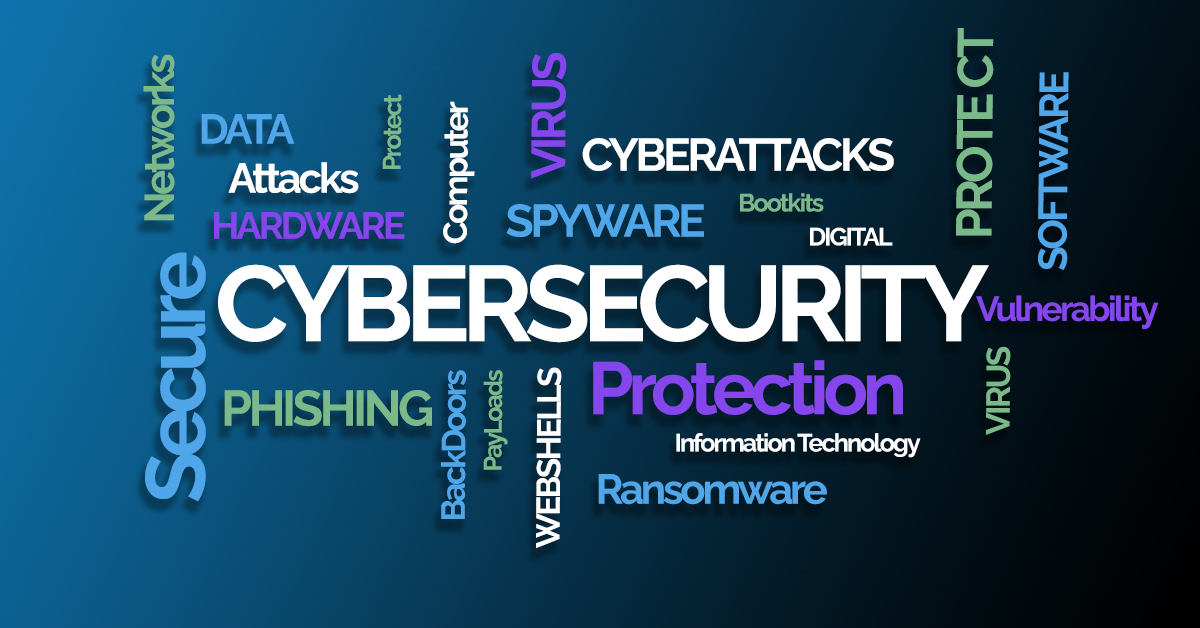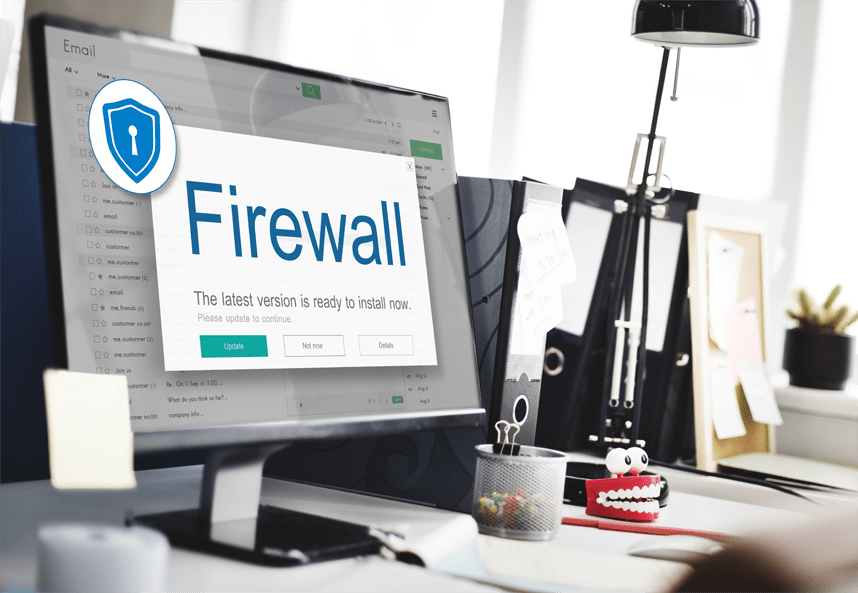How To Promote Cyber Security Awareness - What is it & Why it's Important?

What is cyber security awareness?
With cyber threats increasing daily, cyber security awareness is vital to keeping your business and workforce protected against criminals. There’s a reason why there is a whole month dedicated to it! Every October, Cyber Security Awareness month sees experts across the industry speak, write, and promote cyber awareness in the current threat landscape businesses face today.
Cyber security awareness is an ongoing practice of educating and training employee members about the dangers that lurk within the cyber world, how to handle these threats, and how to prevent them. In its simplest form, cyber security awareness is being able to acknowledge a cyber threat and acting appropriately to avoid potential risks.
What else does cyber security awareness include?
- Latest security threats
- Dangers of clicking malicious links
- Dangers of downloading an infected attachment
- Online interactions
- Disclosing sensitive information
The goal of cyber security is to strengthen and enhance your organisation’s security posture. With this, you can build a more resilient business that can win the fight against cybercrime with its tightened in-house processes. By investing in cyber security awareness you can gain peace of mind across your business. Once employees have knowledge of the latest security threats and what to do in the aftermath of an attack, cyber security becomes less daunting as your business will be ready.
Why is cyber security awareness important?
The biggest threat to a company is…the end users. If the end users are not capable of being up to date with the newest cyber security threats and aren’t able to manage the threats adequately, they leave organisations vulnerable to cybercriminals. Unfortunately, human error has been a big contributing factor to many breaches. Did you know more than 80% of breaches involved human error? This included social engineering attacks, errors and misuse of stolen credentials.
What does a threat actor want? Their main end goal is to gain information in order to exploit and infiltrate your organisation’s networks and systems. Therefore, and for this reason alone, cyber security awareness has become a natural practice for all organisations and their staff members. Educating employees so they are not the “easy target” is what cyber security awareness is all about, ensuring empowerment of your workforce with the right knowledge and resources is not an overlooked quality.
Cyber security awareness best practices?
When it comes to implementing cyber security awareness there are several best practices you should follow to get the most out of your employee’s training and education
All employees of the organisation should receive training
The main reason for security awareness is to ensure everyone within a company has the right knowledge and information to fight against cyber threats. No one is immune from making mistakes or being targeted, and it should be mandatory for everyone, from executives to entry-level employees. It’s especially important for senior-level management to do awareness training since they are high-value targets with access to sensitive information.
Make training an ongoing process
Since training tends to be forgotten over time, a security awareness programme should be put into place which is ongoing. Everyone within the company needs to understand their role, if a breach were to happen and security training is exactly what that does. Security training should include Social Engineering, Spear phishing, phishing and other cyber-attacks. Training programmes should be established when onboarding new staff to ensure their cyber knowledge is embedded.
Your training should cover the basics
Security training should train employees on fundamental topics such as password security, anti-phishing techniques, spear phishing, and social engineering.
Understanding the basics is an overlooked but important skill when it comes to cybersecurity awareness.
Consider how your employees work
What are your employee workflows? What obstacles do they face when performing their day-to-day duties?
Once you know the answer to these, you can gain a better understanding of the types of awareness training they need. But how do you go about getting this information? You need to ensure people with knowledge of the local working environments are included while creating the security policies.
Don't be overly critical when employees make mistakes
It’s not an easy task to not reprimand anyone who made an error despite having awareness training. Experts don’t recommend this, employees are not motivated by fear, and if this error were to happen again they are less likely to report it next time. The best training programs include a test at the end to ensure that your staff have understood the content and are ready to use what they have learned. So even though you should be strict about your employees taking awareness training, expert advice is to use errors as a learning experience.
Look for ways to complement staff awareness training
Lastly, there are things you can do to boost your staff’s understanding of security awareness.
You could go for a different approach and start placing posters around the office or even creating email signatures which contain tips on how to be more secure.
How to promote cyber security awareness - Our top tips
Closing the gap in your data security and compliance requires time, education, planning, and buy-in. Preventing data breaches within a company falls largely on creating clear internal messaging throughout the organisation. However, to help with this, we’ve created 5 tips to help you implement cyber security awareness in your organisation.
Make sure to have policies and procedures in place.
Data security starts and ends with documentation. This is the foundation of your security culture, and the more time and effort you spend on this documentation, the better foundation you will have. But what will you use these policies and procedures for? You’ll use them as evidence of compliance, for employee training, and to support day-to-day training.
Now you know what policies and procedures are, what should you include in them?
- Firewall rules – These are instructions that control how a firewall devices handles incoming and outgoing traffic.
- System hardening standards – A collection of tools, techniques, and best practices to reduce vulnerability in technology applications.
- Data retention policies – The types of records or information you hold, what you use it for and how long you intend to use it.
- Password policies – A set of requirements for passwords in an organisation. This can include requirements such as length, complexity, expiration date etc.


Train employees on how to properly manage sensitive data.
Managing sensitive data on a daily basis involves many people, processes, and technologies. Some of the areas you’ll need to know will be:
- Risk Assessment and Risk Management Plans
- Data Encryption
- Data Destruction
- Wireless Network (Wi-Fi)
- Secure Remote Access
Knowing these will give your employees a better understanding of how to manage sensitive data appropriately, each individual area covers a different area of managing data and you should ensure all your employees are aware of these.
Understand which security tools you actually need
The correct security tools are critical to protecting data at your company. Due to a lack of appropriate tools, data breaches occur at a high rate.
Your security tool setup should ideally be comprised of:
- Firewalls: Essentially filters harmful internet traffic to ensure sensitive data is protected.
- Anti-Virus Software: An additional layer of security to protect the system within the network.
- File Integrity Monitoring (FIM): This will generate an alert when a file is changed.
- Vulnerability Scan: An automated internal and external scan that performs a high-level search for vulnerabilities.

Prepare your employees to Respond to a Data Breach
Data breaches are inevitable, if a breach is successful all your data is compromised, that’s why a response plan is so important. Depending on what security mandate you comply with, there’s a high chance your business could face significant fines if your data is breached successfully. Keep in mind, there have been fines so high it has put companies out of business.
What steps are within a data breach?
- Prepare
- Identify
- Contain
- Eradicate
- Recover
- Review
The success of a data breach within your company comes down to communication. If you have a plan but no one knows about it, your employees will spend a lot of time scrambling and panicking to organise a response to the breach which has occurred. An accurate response plan includes things such as a pre-written PR response, a contact list for emergency communications and so on.
However, what role does your employee play and how do you prepare them? Well, their training should include topics such as what roles, possible scenarios, and a heavy emphasis on what not to do.
Frequently Ask Questions
What are the different types of security awareness training?
- Phishing
- Password
- Privacy PII
- PCI Compliance
- Ransomware
- CEO/Wire fraud
- Data in Motion
- Office Hygiene
- GDPR
- Social Engineering
What Is Malware
To put it simply, malware is malicious software. Once penetrating a system, malware can cause harm, and disruption and even steal sensitive data. There are different ways it can get into your system but the most common is if a user clicks on a link or opens a malicious attachment in an email.
What is a Phishing email?
Investing in your Cyber Security is the best way to become secure. Redsquid Cyber/Kill is the perfect combination of solutions, giving you maximum protection.
What are some common cyber threats?
Some common cyber threats include phishing attacks, malware, ransomware, password attacks, and social engineering.
What should I do if i become a victim of a cyber attack?
If you become a victim of a cyber-attack, you should immediately disconnect your computer or device from the internet and change your passwords when you get a chance. Identifying it and reporting it to your IT team is the best and most effective action to take on.
How often should you train employees
Ideally every four to six months, there are various solutions which test and train users more frequently than this. Research has found that after 4 months employees were able to track common phishing emails but after 6, they began to forget what they’ve learnt.
Why do we need cyber security awareness?
The best way to wrap up any blog is to ask the question…why? Why did we write a blog dedicated to how you can promote cybersecurity awareness training within your company? To demonstrate the serious vulnerability companies all over the world are facing, it takes one person not listening, paying attention, not caring or even just forgetting to cause your business to go under.
Data breaches cost UK organisations an average of £2.9 million per breach. 82% of breaches involve a human element. Why take that risk? No matter how small or large, a risk is a risk, and your company and its employees will benefit from the right training which you need to provide.
The aim of promoting cyber security awareness is to build a security culture within your organisation. Developing this culture has long been the holy grail for businesses. However, this doesn’t come easy, the goal of raising the importance of security education training and awareness is extremely hard to achieve. For this reason, cyber security awareness training should be implemented in all businesses to ensure this security culture is pushed forward.
Do you want to future-proof your business but don’t know where to start? That’s where we come in, we provide your company with the resources you need to ensure you and your employees stay safe. That includes Real Life and customisable training, tracking staff progression and much more! Have a look at our Cyber Security Awareness Training page to gain the full scope of what we can provide you.
